Note: The images on this page are thumbnails. Left click on them to bring up larger versions.
1. The Columns are all that remain of Academic Hall, which burned to the ground on Monday, January 9, 1892. By Tuesday morning the Committee on Rooms had provided a meeting space for all classes. Within three days the Board of Curators had approved a campus plan outlining what is now Francis Quadrangle.

Academic Hall, morning after the fire
(University Archives, C:0/3/7)
2. When Jefferson's heirs made plans to replace his original tombstone they received numerous requests for it. MU petitioned and received it because MU was the first state university in the Louisiana Purchase Territory which Jefferson had acquired during his Presidency. The tombstone arrived at MU in July, 1883 and is now located to the west of the Chancellor's Residence.

Jefferson Monument
(University Archives, UW:1/0/1)
3. Memorial Tower, which stood alone from 1926 until 1952, is approximately 140 feet tall. Although the South Wing foundation was laid in 1930, the North Wing was the first to be completed in 1952. The South Wing was finally finished in 1963.
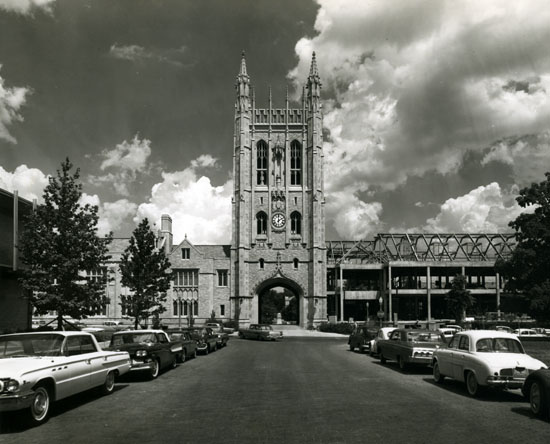
Memorial Tower viewed from the west, with the South Wing under construction.
(University Archives, C:1/25/6)
4. Don Faurot was the coach of the MU football team from 1935-56, except when he was in military service during WWII. His game record was 101 won, 79 lost and 10 tied; his teams appeared in the Orange Bowl, the Sugar Bowl and twice in the Gator Bowl. He is also credited with inventing the "Split T" formation.
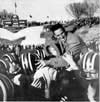
Don Faurot being carried off the field after his final game
(Savitar, 1957 pg.190)
5. From 1839-1870 the University of Missouri had but one campus, Columbia. In 1871 the School of Mines and Metallurgy was established in Rolla. In 1963 UM expanded to a four campus system with the addition of University of Missouri - St. Louis and University of Missouri - Kansas City.

Architect's drawing of University Hall
(University Archives C:1/81/1)
6. The Geyer Act was passed by the Missouri legislature in 1839. Articles I and II created the Seminary Fund and set up the organization and powers of the University.
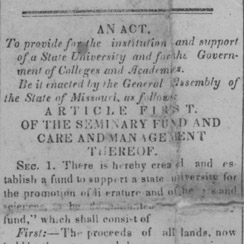 |
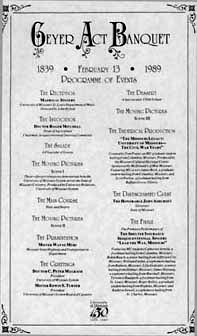 |
| Broadside of Geyer Act, 1839 (University Archives: C:0/46/4) | Program for a Banquet Celebrating the University of Missouri's Sesquicentennial, ca. 1989 (University Archives: UW:4/161/7) |
7. There were two graduates, cousins Robert L. Todd and Robert B. Todd. However, since the legislature hadn't given the University authority to grant diplomas, their official degrees weren't given until 1845. Robert L. went on to be Secretary of the Board of Curators while Robert B. became a Louisiana Supreme Court Judge.
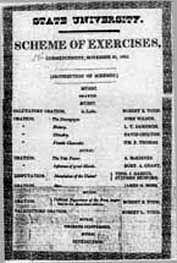
Program of the University of Missouri's 1843 Commencement
(University Archives, C:0/51/1)
8. Women were first admitted in 1867, but only to the Normal, or Teachers, School. Called a "bold and hazardous undertaking" at the time, women were admitted to all classes by 1871.
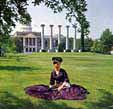
Student in Dress from Historic Textiles Collection
(Cover of Missouri Alumnus, 09/1967)
9. In 1839 the legislature passed the Act to select a site for the university. Bids of cash and land were taken from interested counties to ascertain the location. The "Roll of Honor" is a list of the citizens of Boone County that "subscribed" money to obtain the university for Columbia.
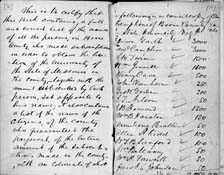
The first page of Boone County's "Honor Roll," with introductory note, ca. 1839
(University Archives, UW:1/5/3)
10. In the winter of 1935 four graduates of Lincoln University, a traditionally black school, applied for admission to enter MU professional or graduate schools. The Board of Curators refused entrance, because the constitution and laws of Missouri had established a separate educational system for white and Negro students. Lloyd L. Gaines, one of the four students, filed a suit that proceeded all the way to the U.S. Supreme Court. In 1939 the Court handed down a decision that paved the way for desegregation of schools, but in the mean time Gaines had disappeared. Black students were finally admitted to regular MU classes in 1950.
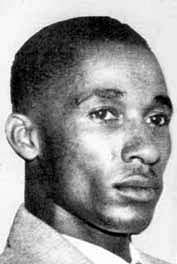
Lloyd Gaines
(The African-American Experience at the University of Missouri, 1950-1994, by the University of Missouri-Columbia Black Alumni Association)
11. While some pieces from the Cast Museum are housed in Swallow Hall where the Department of Art History and Archaeology is located, the majority of the collection, previously in Mizzou North as part of the collections of the Museum of Art and Archaeology, is now in Room 202 of Ellis Library. The cast collection was housed in Pickard Hall from ca. 1975 until 2012, when it was moved to Mizzou North. At other times, it had been housed in Jesse Hall and Ellis Library. Professor John Pickard, who founded the Department of Art and Archaeology in 1892, went to Europe before World War I to select plaster casts of famous works of classical sculpture. After World War II many such collections were destroyed and, since museums no longer allow such castings for fear of damaging the originals, MU has one of the few surviving examples of this old teaching tool.

The Cast Museum in 1942.
12. Sanborn Field, located at the corner of College and Rollins, has been the site of research investigations on soil treatments, erosion and cropping systems since it was established in 1888. It is also where the organism streptomyces aureofaciens, the source of the drug Aureomycin, was first found in a soil sample. Sanborn Field was designated as a Registered National Historic Landmark in 1965.
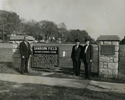
Sanborn Field
13. Many of the buildings located on the East campus were built between 1913-1914 and were constructed of white limestone.
